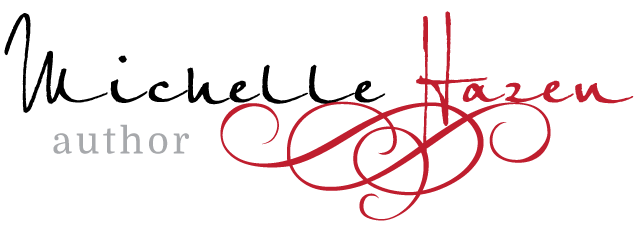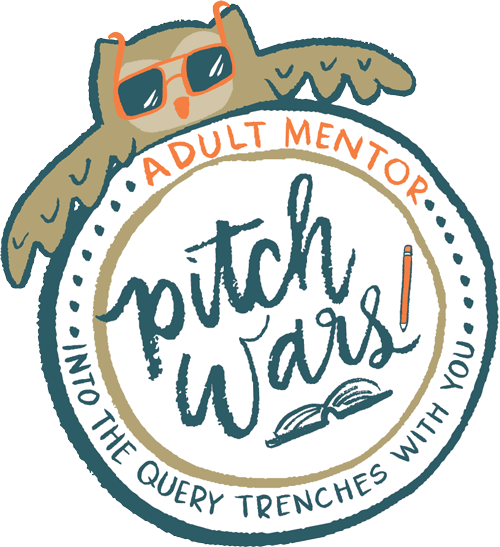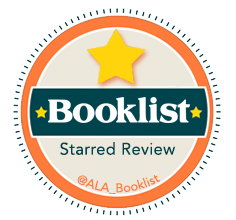5 Ways to Write A Better Edit Letter
When you’re giving feedback on a manuscript, there are two parts to writing the edit letter:
- The craft stuff: how you think the book could be strengthened.
- The emotional dimension: getting your author to the right headspace to actually make the changes.
The second skill is the one that editors most often ignore or shortcut. After all, they figure, I told them what was wrong with their book. What else do they want from me? But the second skill is the one that’s the most important to get good results.

Picture courtesy of Dustin Lee, Unsplash
What? What did I just say? That emotions are more important to the revision process than craft? Yes, absolutely I said it. Before I was a writer, I was a counselor, and one thing I learned is that it doesn’t matter nearly as much what you say to a client as it matters HOW you say it.
If you tell a client on their first visit that they have abandonment issues and that’s why they keep sabotaging their relationships, it’s unlikely they’re going to change. Successful therapy is all about guiding them to a place where they can have that realization for themselves, so they can internalize it and don’t feel they’re being attacked or dictated to. Writing a good edit letter is exactly the same.
In the writing world, I hear people say things all the time like, “I just want the truth, don’t bother to sugarcoat it,” which I think points to a fundamental misconception about giving feedback.
Look, you don't have to be cruel to be honest.
And you don’t have to suffer to make great art. Writers usually get their best ideas when they’re relaxed, and do their best writing when they’re confident. If your edits get clients excited and energized, they can jump right into revisions, instead of spending a lot of time and energy convincing themselves not to quit, and going through the stages of grieving about their edit letter.
Ask yourself, do you care more about feeding your own ego and showing off to your client how much you know about writing? Or do you care about your client getting the best possible results and having the best possible experience? If it’s the second, read on.
1. Make Them Feel Seen
What’s the first emotion authors have when they read critique of their work?
Defensiveness.
There are memes and jokes all over the internet about this “universal” experience but I would argue it doesn’t have to be universal. Think of it from their perspective: they wrote a book, put their emotions and work out there because they had something to say. A manuscript is a plea for connection on the most basic level. And the edit letter is a list of all the places that message was not received.
When you’re reading a client’s ms, don’t just think about what you’re getting from the book. Look deeper for what you think they were trying to say. See if you can locate the soul of the book and use that to guide all of your feedback.
First and foremost, show the client that YOU GET THEM.
If you can do that, I promise they will listen all the more carefully to your advice because 1. They know you’re on their side. 2. They know your advice isn’t going to point to making a book they don’t like. 3. It is the first step to making the revision process feel like an upward trajectory of improvement rather than the aftermath of a failure.
Remember that soul of the book and let all your revision suggestions tie back into it. Make sure to point out all the places where their message is already being received, loud and clear. Especially where you saw what they were trying to do and you have ideas for helping them take it a step further. Let your clients feel heard, and respected. After all, isn’t that the basis of every healthy relationship?
2. Compliment Better
First, it’s important to always include positives about the book, not just negatives. If authors don’t know what they’re doing right, they might delete the parts that are working in revision. However, I’ve learned you can produce a big difference in final revision results based on the subtleties of exactly HOW you convey the positive elements of the manuscripts.
Where? Start with positives, so your author has something to go back to, to bolster their confidence. Many editors already do this. BUT! The next step is to weave positives in throughout your entire edit letter. When you’re talking about improving Character A, mention that one moment when they made you laugh and the chapter when they broke your heart. To authors, this usually feels more genuine, like you’re not just trying to cheer them up. It can also help keep insecure authors from compartmentalizing your compliments and forgetting them as soon as they’re past that first page of the edit letter.
How much? Have you ever noticed how authors will read 45 positive reviews and 1 negative review, and it’s the one negative review they can still quote word for word weeks later? Humans evolved to focus more on the negative, back when remembering to run from saber tooth tigers was a lot more important than remembering to stop to smell the flowers.
In writing, this does not serve us.
Also, the way most edit letters are written makes it look like the book is failing more places than it is succeeding, which is usually (hopefully) not the case. Remembering to MENTION all the places where the book is working will help the client have a more realistic, optimistic view of their own manuscript. The concept of the shit sandwich is a great one to balance your positives and negatives: two positives for each negative to balance out humanity’s natural bias toward focusing on the worst case scenario.
3. Use Your Words
Just like in therapy, it's not always about what you say, it's about how you say it.
Minimize/maximize. When you’re talking about the negatives, use smaller, less dramatic words. “You could shade up the emotional resonance in this scene. Add a touch more backstory here.” Always avoid broad statements like, “Doing this will sink your entire book.” “This scene made me want to throw the book across the room.”
The harshest thing I will ever say in an edit letter is “I strongly advise…” because those kind of negative statements stick in writer’s heads and can negatively impact them for their whole lives. Ask a group of writers sometime if they remember anything mean an English teacher told them in their childhood. Most of them can repeat a quote verbatim.
Similarly, when you’re talking about positives, use big splashy language, like, “Oh my gosh I LOVED that moment with the closet explosion!” “Jimmy stole my entire heart and half my soul when he mended that sock.” We know writers will already weight the negatives more than the positives, so mindfully use your language to help bolster the impression that the positives are more important and the negatives still exist and need to be addressed, but they’re not the end of the world.
Build on the positives. Like I said above, tie your feedback directly into the soul of the book. When something needs to be changed, couch it in references to what’s working. So instead of saying, “Valerie struck me as a selfish hag and you need to make me like her.” Say something more like, “When we see how terribly Valerie’s mother treats her, it’s a fantastic opportunity to make the audience really hurt for her, and I think you could make your point even stronger if you show Valerie’s hurt and shame at her mother’s words.” This also mirrors the process of good revisions: finding the core message of a book and making it even more impactful.
Enhance, not fix. The language of revision is so violent and negative. “Slash and burn.” “Rip out that subplot.” “Kill your darlings.” To do our best work, we all need to change our attitude about revisions. You’re not butchering your manuscript, you are making it even stronger. So use language of improvement and enhancement, not failure and brokenness.
Tell your clients, “Enhance the character arc with a lower starting point and an increasingly dramatic turning point.” INSTEAD OF “Fix the flat character arc by patching in a black moment, cutting the current climax, and writing something that has the emotional resonance the current draft lacks.”
4. Calibrate For The Learning Curve
The concept of the learning curve is that the most learning takes place when someone’s existing skill set is challenged, but not overwhelmed. Unfortunately, many editors ignore this and just throw the book at every client, which often results in clients feeling overwhelmed, shelving projects or (yes, it does happen) quitting writing entirely.
I’m not saying don’t give honest feedback. I’m saying, consider your client’s skill level and prioritize what the most important changes are for every book. If it’s a client’s first book, maybe you can focus on creating a strong character arc and a good balance of dialogue and narration. Maybe it’s not the time to really dig into whether the yogurt in Chapter 3 has enough thematic resonance.
Giving a client the right level of challenge in each edit letter will help them internalize and retain more of what they’ve learned.
5. Add a Phone Call
Remember, not everybody learns best by reading, not even writers! Phone calls are intrinsically better than email for brainstorming, because they allow for more back and forth. They also make it easier to convey your emotional tone so clients can feel your enthusiasm for a project and not focus in on the negatives to the exclusion of the positives. The whole reason gifs and emojis are so popular is to add the dimension of voice tone and facial expressions to text-based conversation (and yes, you can use emojis and gifs in your edit letter if you think your client would appreciate that!).
I suggest waiting a week between the edit letter and the phone call, and encouraging the client to NOT START WORK on the manuscript during this time, but just to write down ideas. This way, instead of jumping on the first idea that occurs to them and slapping it into the ms, time and space is allowed for ideas to grow and evolve. Often the ideas they have by the third or fourth day are the better ones, and then the phone call can be even more productive.
Wait, this sounds like a lot more work!
Sorry, it is. It’s much easier to slap a list of corrections into an email and zap it off. It takes less time to be straight to the point than it does to help get your client in just the right headspace for making revisions. To consider the importance of both the emotional and the craft dimension of revisions. But it does, I promise you, create better books and happier clients, which is what every editor and mentor should be striving for.
And not only that, most authors are writing for free or for a pittance. If they’re not getting paid for all this work, shouldn’t it at least be fun?


















Absolutely fantastic piece! Your wisdom shines through and provoked me to consider revising my own approach in some areas as an editor and coach. Thank you!
What sage advice, Michelle! It’s making me rethink my own feedback for critique partners as well. Maybe I could use some of these tips to think about how I approach my own work, too. I could be a touch nicer to myself.
Pingback : How to Write a Good Edit Letter for a Book (Plus a Template!) - Tracy C. Gold Tracy C. Gold